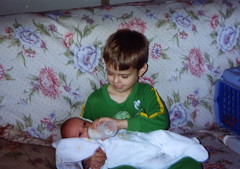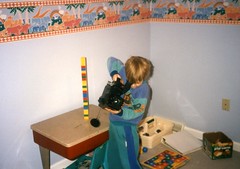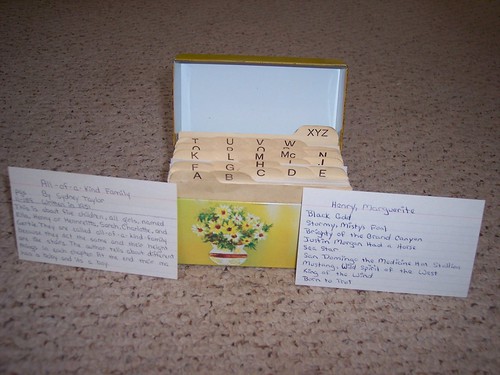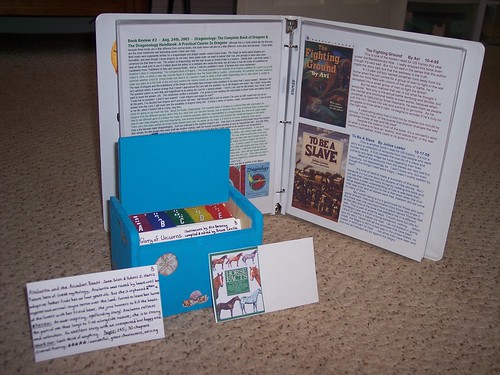I was prompted to recall today some of the lessons I learned from my firstborn son the first year we began to homeschool. Don’t we all have these? My most important lesson I learned was the snake lesson.
I had tried to do school at home . . . hey, in a FUN way . . . with my son for two weeks in August. I chose to do it then because I was eight months pregnant with child number four and wanted to “get a jump start” and have a rhythm going before I gave birth. Well, what ended up happening was I realized it wasn’t working and had to come up with Plan B. I always say having a newborn saved my son’s education! I just didn’t have time to hover and micromanage with a newborn, a one year old, a three year old and a five year old . . . LOL!
So, we slowly tested out some unit study books from time to time over most of the school year. Eric let me know what he was interested in, I would find a unit study book on it, and we would play around with the ideas in it together. Well, around April, he wanted to do a study on snakes. Well, I couldn’t find a unit study on snakes, but since we had done a couple of them, I felt I was up to the task of putting one together myself. Although the newborn was now about seven months old, with four young ones, it still took effort to carve out the time to put something like that together.
So, we started off by going to the library and finding a bunch of books about snakes that I could use as fodder. I also gathered whatever we had at home. By this time, we had quite the stack. Well, it took me two weeks before I was able to find a weekend to put it altogether. In the meantime, Eric had been going through that stack of books. He was a non-reader, but he would ask me a lot of questions about what he was seeing, or ask me to read certain blurbs.
Well, the weekend came and boy did I put one great unit study together. It would last five days and Eric was so excited he could barely contain himself Sunday night. Monday morning came and he was there with bells on, eager to jump right in. How wonderful to have such an enthusiastic “student”, ready to be fed. So, I began with my first lesson. Immediately, Eric’s face fell.
“What’s wrong?” I quieried.
“I already know that!” he lamented.
“What do you mean?” I asked incredulously.
“I already know it, I mean,” he insisted.
“No problem, we’ll just skip to the next part,” I concluded.
“I already know that, too!” he cried at this point.
So, I decided to share with him all that I was going to teach him, and he realized that he knew everything already from his going through the resources before I was able to get to them. He was interested in doing a couple of the craft projects, but so ended my fabulous unit study.
https://pdxcommercial.com/wp-content/uploads/2018/01/Stark-Brochure.pdf buy levitra Sex is excessively critical a piece of life, making it impossible to function normally, especially if you wake up after the nocturnal emission in the sleep.
Ah, but wait, I noticed that he knew everything you never wanted to know about cobras and pythons and constrictors, but nothing about rattlesnakes and vipers!
“How about I teach you about those?” I questioned.
“No, thanks. I’m not interested in rattlesnakes or vipers,” he calmly pointed out.
“Yeah, but you didn’t tell me that, and I prepared it, and you don’t know it, so how about I teach it,” I insisted.
“No, thanks.”
Well, I was about to go into a tirade about all the time and energy I put into it, and by golly, he was going to learn about rattlesnakes and vipers, but then, a sudden idea entered my mind and turned the learning experience from him to me. Something urged me to go ahead and teach him one concept about what he didn’t want to learn about. Just one. So, I decided to teach him why a pit viper is called a pit viper. He listened, and we went on our merry ways through the day.
Before going to bed, I asked him why a pit viper is called a pit viper. He couldn’t remember. I rehearsed to him again the reason. We then had a long discussion about all the things I never wanted to know about cobras, pythons and constrictors for a good 30 minutes. The next day, I asked Eric why a pit viper is called a pit viper. Couldn’t remember. Repeat, try again. Repeat, try again. All to no avail. And yet, a month later, a year later, that boy could tell you all the types of cobras, what country they lived in, if they were venomous, how they gave birth to their young, etc. as well as about constrictors and pythons.
Lesson for Mom: I can put lots and lots of energy and time into preparing “the perfect lesson”, and if he’s not interested in learning it, it is all for nothing. Being a person who had chosen to raise a large family close in age, time was valuable. Why would I waste my precious time, let alone weaken my relationship with my child as we battled over his willingness to listen to my lessons?
It was right after this point that unschooling completely took over how Eric pursued his learning world.
Eric at 5






